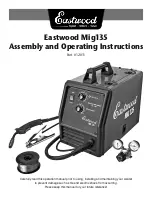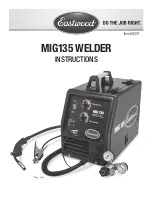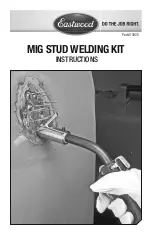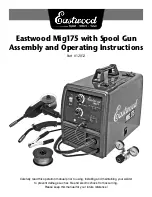
Appendix 5: Regulatory approvals
Bell Location
The alarm sounding device (bell) shall be located where it can be heard by the person operating the security system during the daily
arming and disarming cycle.
Protection of the Control Unit
The local control unit and the local power supply must be protected in one of the following ways:
l
The control unit and audible alarm device must be in a protected area which is armed 24 hours a day.
l
Each partition must arm the area protecting the control unit and the audible alarm device power supply. This may require
duplicate protection armed by each partition. Access to this protected area, without causing an alarm, will require that all
partitions be disarmed.
l
In all cases described above, the protected area for the control unit must be programmed as not-bypassable.
Casual Users
The installer should caution the user not to give system information (e.g., codes, bypass methods, etc.) to casual users (e.g., service
people) and to only give out One-Time Use codes.
User Information
The installer should advise the user and note in the User’s Manual:
l
Service organization name and telephone number
l
The programmed exit and entry time
l
Instructions to test system weekly
l
Note that the installer code cannot arm or disarm the system
5.4 SIA False Alarm Reduction Installations: Quick Reference
Minimum required system consists of one Control unit model HS3032, HS3128, or HS3248, and any one of the compatible listed
keypads (refer to
See "Model comparison" on page 6
).
The following wireless keyfobs can also be used in SIA compatible installations: PG9929, PG9939,PG9949.
Note:
For models PG9929 and PG9939, the panic/emergency key shall be disabled for SIA compliant installations.
For a list of the default values programmed when the unit is shipped from the factory, and for other programming information, refer to
the following table.
The following optional subassembly modules also bear the SIA CP-01-2014 classification and may be used if desired: HSM2108
zone expander, HSM2208 PGM output module, HSM2300 auxiliary power supply, HSM2204 output module, HSM2HOST9 2-way
wireless transceiver, PG9901 indoor siren, PG9911 outdoor siren, and LE9080/3G9080/3H9080 cellular and PSDN communication
module.
Caution
l
For SIA FAR installations use only modules/devices that are listed on this page.
l
Fire Alarm Verification feature (Auto Verified Fire Zone type [025]) is not supported on 2-wire smoke detectors zones, model
FSA-210B(T)(S)(ST)(LST)(R)(RT)(RD)(RST)(LRST). This feature may be enabled for 4-wire smoke detectors only (FSA-410B
(T)(S)(ST)(LST)(R)(RT)(RST)(LRST) and wireless detectors PG9916/PG9926). The fire alarm delay is 60s.
l
Call Waiting Cancel (Section [382], option 4) on a non-Call Waiting line will prevent successful communication to the
supervising station.
l
All system smoke detectors must be tested annually by conducting an Installer Walk Test. Prior to exiting Walk Test mode, a
sensor reset must be done on the system, [*][7][2], to reset all latching 4-wire smoke detectors. Refer to the installation
instructions supplied with the detector for details.
Notes
l
Programming at installation may be subordinate to other UL requirements for the intended application.
l
Cross zones have the ability to individually protect the intended area (e.g. motion detectors which overlap).
l
Cross zoning is not recommended for line security Installations nor is it to be implemented on exit/entry zones.
l
This control panel has a communication delay of 30 seconds. It can be removed or increased up to 45 seconds by the end
user with installer consultation.
l
The system shall be installed with the sounding device activated and the communicator enabled for transmission using SIA or
CID format.
l
ULC commercial burglary installations require DEOL resistors.
- 309 -
















































